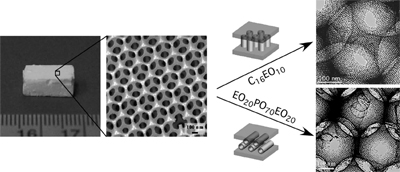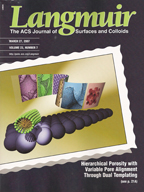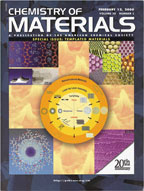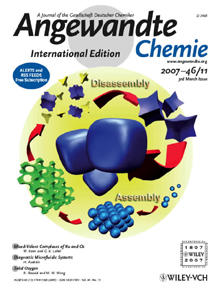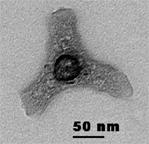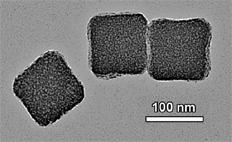Fractal-type major source to widely distributed destinations. Examples include blood transport through the human body and movement of water and nutrients from the roots of a tree to all of its leaves. In catalysis and other reactive applications, fractal transport can also be important when large amounts of reagent must quickly reach reactive sites. This can be achieved in materials with hierarchical porosity, such as monolithic solids that contain large, interconnected macropores for easy transport of reagents and also smaller mesopores that provide high surface areas, possibly combined with functionality and selectivity. The group of Andreas Stein at the University of Minnesota has synthesized three-dimensionally ordered macroporous (3DOM) silica monoliths where the interconnected voids are surrounded by mesoporous walls (3DOM/m SiO2). Macropores, ca. 300 nm in diameter are produced by infiltrating ordered arrays of uniform polymer spheres with a silica precursor. Mesopores, ca. 3 nm in diameter are obtained by adding block-copolymer chains, similar to those used in detergents, to the precursor mixtures. 3DOM/m silica monoliths may be used directly as catalyst supports or they may be employed as molds to create similarly-structured carbon replicas by depositing a polymer in the mesopores, converting it to amorphous carbon, and removing the remaining silica by extraction. The mesopores in the
carbon product can be further filled with graphitic carbon, increasing the electrical conductivity of the sample, its mechanical strength and its capacity to store charge when used in an electrochemical cell. Macropores can also be coated with catalytic nanoparticles. These synthetic approaches greatly enhance our ability to control the properties of materials usable in catalysis, separations, energy storage and sensing.
